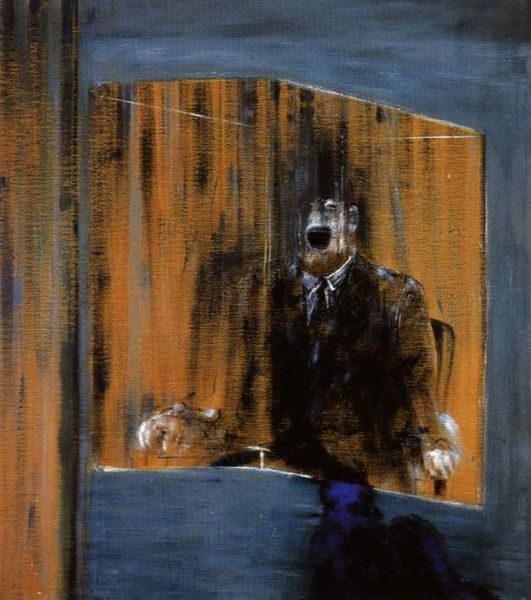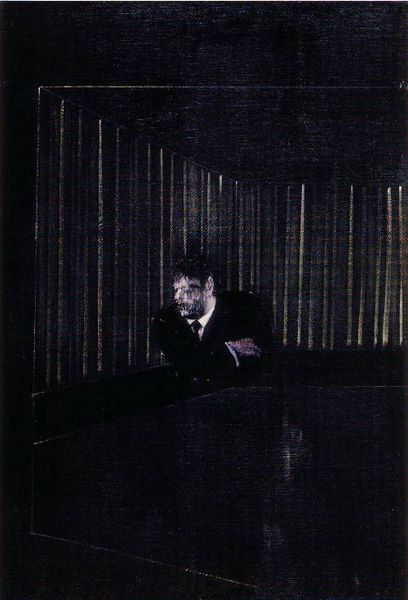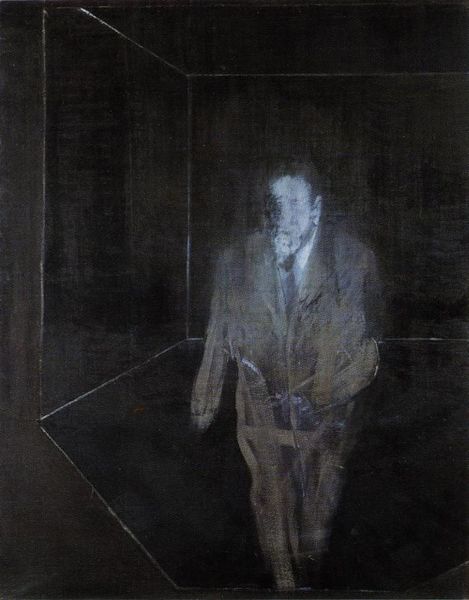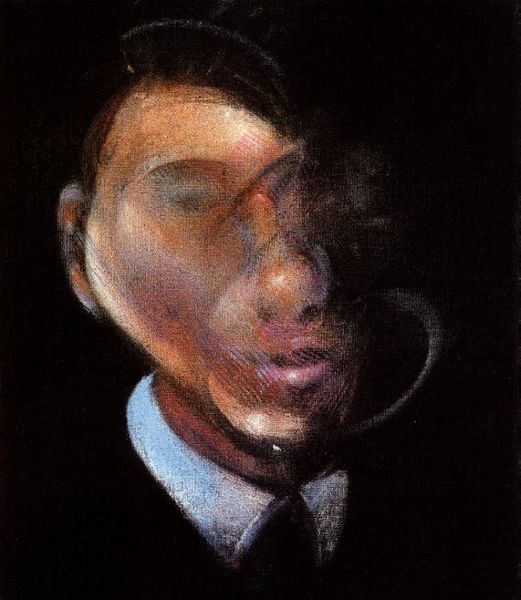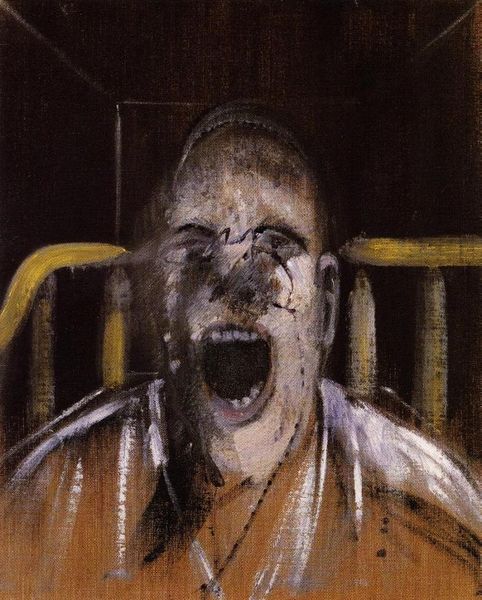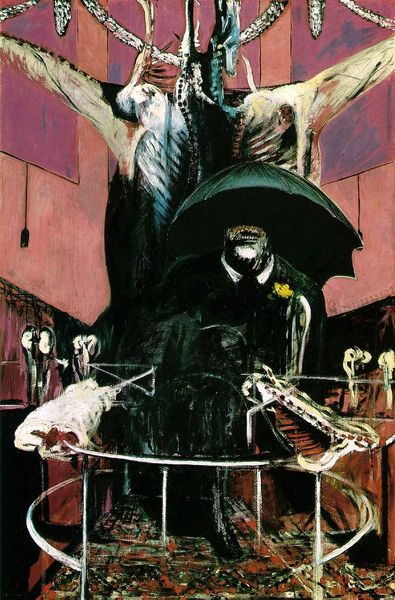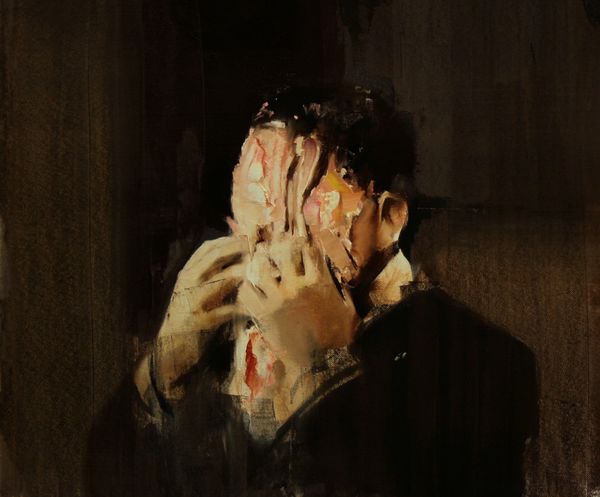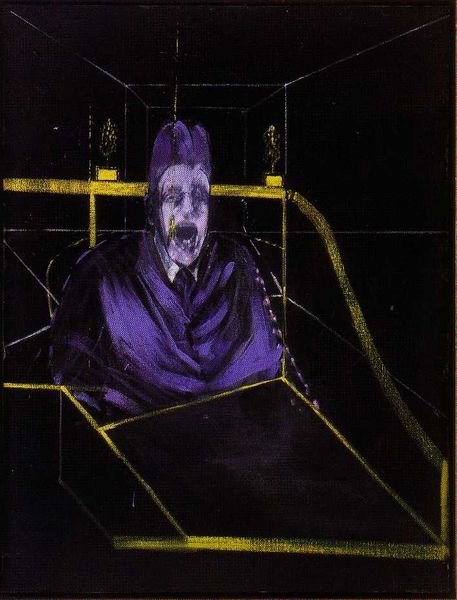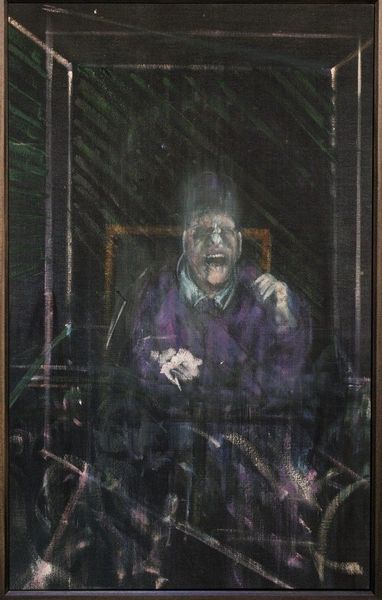
Copyright: Francis Bacon,Fair Use
Curator: Here we have Francis Bacon's "Self-Portrait," created in 1958. Bacon, of course, often wrestled with representing the human condition through a lens of anxiety and existential dread. Editor: It’s immediately striking, isn't it? The oppressive darkness. That black void seems to almost swallow the figure. Curator: Indeed. The figure is presented in a liminal space, neither fully revealed nor completely hidden. The darkness could symbolize societal constraints, psychological barriers, or the inherent limitations Bacon felt as a queer man living in a world that often ostracized him. Editor: The application of the paint is rather chaotic; it's all thick impasto and loose brushwork. It almost appears to be flaying the man. Curator: The distorted features and the seemingly unfinished quality definitely mirror his overall unease and turbulent emotions. He painted several self-portraits throughout his life; each offering a variation on this theme of psychological torment. Editor: One could also interpret the fragmented composition—those cage-like lines behind the subject—as a formal element. This division within the composition reinforces a sense of confinement. Curator: The fracturing aligns, again, to identity; think of the post-war existentialist movement—there are visible fractures, and this work feels akin to societal questioning. Editor: True. And what do we make of that small stroke of almost violent white above the head? Is it highlighting or a literal wiping-out, a further deconstruction? Curator: Bacon’s use of the medium is certainly visceral. He leaves many aspects unfinished, hinting at decay, but simultaneously emphasizing human vulnerability. Editor: So the darkness acts almost as a method. An isolating one, perhaps—but it makes all the more potent use of negative space. Curator: The lack of traditional background, in my view, amplifies the subject’s vulnerability. Editor: I still maintain that visually it's about the deconstruction, the wiping-out...a pure experiment in form. Curator: And in interrogating his public persona—especially considering the prejudices and societal expectations, that darkness serves as a barrier he actively engaged with throughout his career. It gives us a lens through which we may analyze identity, politics, and expressionism as tools. Editor: Well, whether a study in existential dread or the purely deconstructed aesthetic, the effect is undeniably lasting. Curator: Agreed. There's no mistaking that this remains a profoundly unsettling and memorable artwork.
Comments
No comments
Be the first to comment and join the conversation on the ultimate creative platform.
